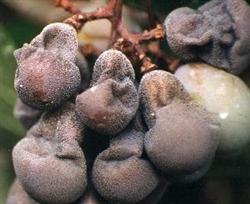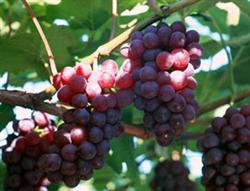How to strengthen the management of the flowering period of grape planted in greenhouse

1. Pick your heart at the right time. The grapes planted in the shed should be reshaped by hedgerows, and the hearts should be picked early to control the growth. When the main vine grows to 60ml 80cm, the top accessory shoots are removed to leave winter buds, and the other secondary shoots are left with one leaf to pick the heart. After 25 days, when the apical winter buds germinated and grew into 7 leaves, 5 leaves were left to pick the heart, and the apical accessory shoots were removed and the winter buds were left behind. After the winter buds germinated again, one pair of shoots could be left 20 cm apart, and two leaves were left to pick the heart, and the rest were erased. two。 Reasonable load. Reasonable load, timely production, can improve the fruit setting rate, but also improve the quality. (1) thinning ears. 15 days after flowering, ear thinning was carried out according to fruit setting, two ears were left in the branches with strong growth potential, and one ear was left in the branches with weak growth potential and one ear in the medium growth potential. If it is planted once a year, one ear will be left for each fruiting branch. (2) thinning grains. Selective grain thinning was carried out for 20 days after 15 minutes of falling flowers. Remove dense fruit and single fruit. 3. One control, two sprays. The main results are as follows: (1) controlling shoot growth. For the fruiting shoot with strong growth potential, twist the upper part of the inflorescence before flowering, or leave 6 large leaves to pick the heart, so as to improve the fruit setting rate. (2) spraying boron fertilizer. Before flowering, 0.2% Mel 0.3% boric acid or 0.2% borax solution was sprayed once every 5 days for 3 times in a row. (3) spraying gibberellin. Dipping 25-40ug/g gibberellin solution in inflorescence or spray at full flowering stage can increase the fruit setting rate and make the fruit mature 15 days earlier. 4. Promote coloring. (1) thinning. When the berries begin to color, remove the old leaves at the base of the new shoots, remove the ineffective new shoots, and improve the ventilation and light transmission conditions to promote the berry coloring. (2) ring cutting. Before the berry coloring, ring cutting at the base of the fruiting mother branch or the fruiting branch can promote the berry coloring and ripen 10 days ahead of time. (3) spraying potash fertilizer. Spraying 400 ml 600 fold solution of amino acid and 1200 fold solution of Skopop or 0.3% potassium dihydrogen phosphate solution during the hard core stage could ripen 10 days earlier. 5. Control diseases and insect pests. There are few diseases and insect pests in grape planted in greenhouse, mainly to control young ear axis rot, white rot, brown spot and so on. 3-Mel 5-degree Baomeite sulfur mixture can be sprayed before and after flowering, alternately with 6000 times of Jinlux solution and 4000 times of Nanxin solution before and after anthesis, once every 10 times for 15 days, 2 times for 4 times. After June, use labor and an Minle alternately, or use 500 Mel 600 times liquid carbendazim to control downy mildew, powdery mildew and black pox, spray once every 10 days, release greenhouse film, refer to open field grape for cultivation and management.
- Prev

Grape should be protected from white rot in rainy days during ripening period.
White rot is one of the main diseases of grape, especially in the old vineyard, when the grape is about to mature, the disease is serious in continuous overcast and rainy weather, which often causes great losses. The disease of grape white rot usually begins in the middle and late July, which mainly harms the ear and the new fruit, and the fruit is more susceptible to the disease during the ripening period. Ear disease, mostly in the vicinity.
- Next

Pay attention to the prevention and control of grape diseases during Meiyu period
When Jufeng grape uses B9 and paclobutrazol to protect fruit, it is easy to cause side effects such as shorter flower ear, smaller fruit grain and so on. therefore, how to make Jufeng protect fruit without hardening fruit stalk, the method of fruit reduction is what people have been looking forward to for a long time. After many years of experiments, we have adopted the pyrone bao fruit produced by Lanyue Science and Technology Company of Sichuan Academy of Agricultural Sciences.
Related
- Moge, come on! The staff of the peasant association in the producing area of cantaloupe were frightened when the crowd gathered.
- Causes and Solutions of low Fruit setting rate of Apple
- Symptoms and control measures of passion fruit virus disease
- Fruit growing lesson: how do apple orchards keep high yields?
- Can you build orchards in the mountains? What are the pros and cons?
- How to manage the coloring period of Crisson grape?
- This paper introduces the processing technology of two kinds of fig products.
- How much is a month for retired teachers in rural areas by 2020?
- How can strawberry planting increase sugar content? We should pay attention to management in many aspects.
- What are the cultivation techniques on how to improve the yield of golden fruit?

